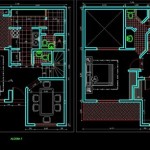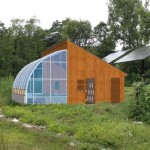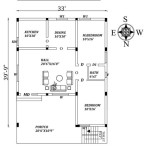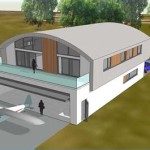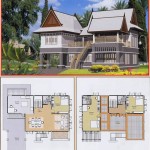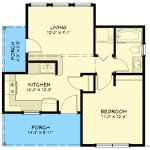Essential Aspects of Tiny House Floor Plans Without Loft
Tiny houses without lofts offer unique advantages and considerations for homeowners seeking compact and efficient living spaces. These floor plans provide a cohesive and spacious layout, maximizing functionality and comfort within a limited footprint. When designing a tiny house floor plan without a loft, it's crucial to consider specific design elements to ensure optimal utilization of space and comfort.
Open and Spacious Layout
Eliminating the loft opens up the interior, creating a sense of spaciousness and improving the flow of movement. Open floor plans allow for versatile furniture arrangements and promote a feeling of airiness, making the tiny house feel larger than its actual size.
Multi-Functional Areas
In a tiny house without a loft, multi-functional areas become essential for maximizing space. The living room can double as a dining area with a convertible sofa bed and tables that can be folded or stowed away when not in use. Kitchen counters can extend to provide additional work or dining space.
Smart Storage Solutions
With no loft for storage, it's vital to incorporate clever storage solutions throughout the floor plan. Built-in cabinetry, under-stairs compartments, and hidden storage nooks are effective ways to maximize vertical space and keep belongings organized.
Natural Light and Ventilation
To create a bright and inviting atmosphere, ample windows and skylights should be incorporated into the design. Natural light not only illuminates the space but also helps reduce energy consumption. Cross-ventilation promotes air circulation and keeps the tiny house comfortable all year round.
Efficient Kitchen and Bathroom
The kitchen and bathroom are essential areas in a tiny house. Designing an efficient kitchen with compact appliances, a sink with a built-in cover, and a cleverly planned pantry is crucial. The bathroom should prioritize space-saving fixtures and include smart storage solutions for toiletries and linens.
Privacy Considerations
To ensure privacy in a tiny house without a loft, it's advisable to create separate sleeping areas. A room divider or curtain can be used to section off the bedroom from the rest of the living space, providing a private retreat for rest and relaxation.
Outdoor Living Space
Incorporating an outdoor living space into the floor plan is a great way to extend the living area and create a connection to nature. A small deck or patio can provide additional space for entertaining, relaxing, or simply enjoying the outdoors.
Conclusion
Tiny house floor plans without loft offer a unique and practical alternative to traditional designs. By incorporating open and spacious layouts, multi-functional areas, smart storage solutions, and efficient kitchens and bathrooms, homeowners can create comfortable and inviting living spaces within a compact footprint. These floor plans emphasize functionality, space optimization, and a connection to the outdoors, making them an attractive option for those seeking a minimalist and efficient lifestyle.

Tiny House Floor Plan With No Loft Plans Small Cabin

Tortoise S Floor Plan For An 8x32 No Lofts And Steps Ladders But Very L O N G Diy Tiny House Plans Building A

117 Sq Ft No Loft Tiny Home Tumbleweed Elm 20 Horizon House Pins

Tiny House Design Floor Plans

Tiny Houses Without Lofts House Blog

8x12 31 Gif 600 409 Tiny House Floor Plans

Why You Need A One Story Tiny House Without Loft The Life

Tiny House Plans That Are Big On Style Houseplans Blog Com

Sleep Without Climbing In This Loft Less Tiny House

Why You Need A One Story Tiny House Without Loft The Life

